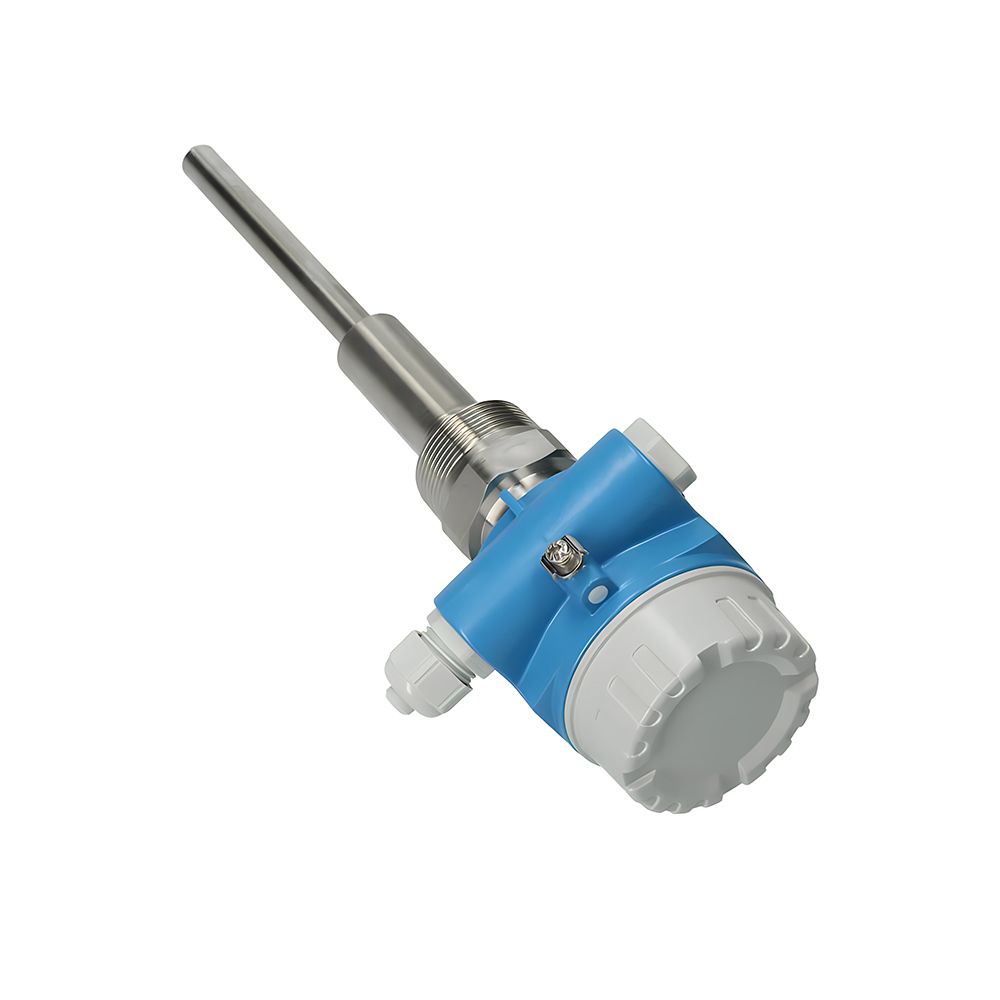Vibrating Level Sensor
Vibrating level sensors use a vibrating probe that is inserted into the material. The change in vibration frequency or amplitude is detected when the probe comes into contact with the material surface, providing information about the level of the material.
Vibrating Level Sensors work based on the principle of mechanical vibration. The sensor consists of a fork or rod that vibrates at its natural frequency. When the fork or rod is in free space, away from the material, it vibrates undisturbed. However, when the material level reaches the sensor, it dampens or disrupts the vibration, causing a change in the sensor’s vibration frequency or amplitude. This change is detected by the sensor, indicating the presence or absence of material at that level.
Vibrating Level Sensors are typically used for point-level detection, indicating whether the material level is above or below the sensor. They are suitable for measuring the level of both solids and liquids in various storage vessels, such as silos, hoppers, and bins.
These sensors offer advantages such as simplicity, robustness, and reliability. They are not affected by factors like dust, humidity, temperature, or pressure. Vibrating Level Sensors are suitable for applications where the material has low bulk density, is prone to bridging or sticking, or has a tendency to form uneven surfaces.
Vibrating Level Sensors are available in different configurations, including vibrating forks and vibrating rods, to suit different applications and material types. Some models offer additional features like adjustable sensitivity, self-cleaning capabilities, and the ability to detect high or low-level conditions.
When selecting and installing Vibrating Level Sensors, it’s important to consider factors such as the material properties, vessel geometry, installation requirements, and the specific needs of the milling process. Proper mounting, calibration, and periodic maintenance are necessary to ensure accurate and reliable level detection.
